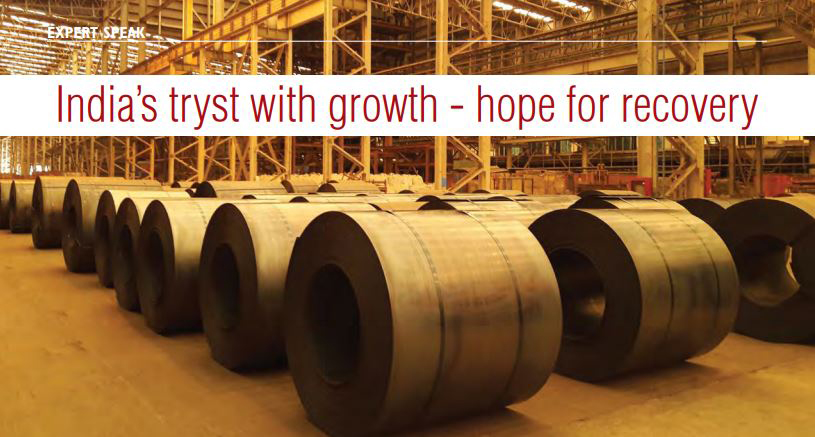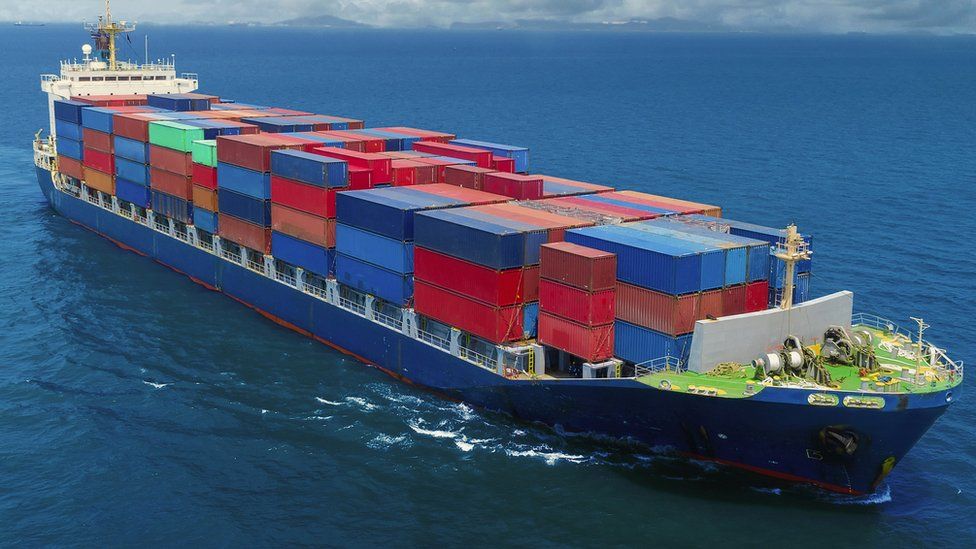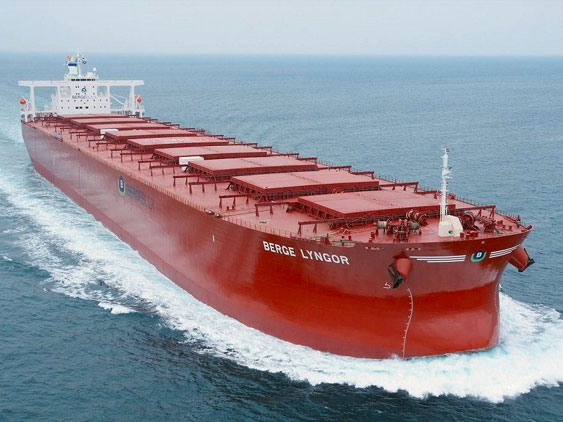
Port performance enhancement – a requisite for growth
Over the last few decades, the maritime industry has witnessed drastic increases in the size of dry bulk carriers due to the optimization of “economies of scale”. The dry bulk vessel growth has translated to impact the entire maritime transport ecosystem leading to, for instance, port and canal expansions. The volume of global seaborne trade was expected to grow at 3.8 percent between 2018-2023, with the dry bulk segment growing the fastest. In 2017, major dry bulk commodities accounted for approximately 30 percent of seaborne trade, an increase of 5.1 percent from 2016. Developing economies accounted for early 60 percent of the imports and exports.
In India, maritime trade accounts for 95 percent of the country’s total international trade volume. The quality and performance of India’s 212 ports (12 major ports administered by the Union Government and 200 non-major ports overlooked by the state government and union territories), located along the 7517-km coastline, largely impact the cost structure and in turn define India’s competitive advantage in comparison to other developing economies. Unfortunately, the low draft at Indian ports, with most comprising a draft of under 14m, except select few newer ports with drafts of more than 14m, does not meet international standards - a major constraint in traffic handling. The draft would need to be a minimum of 18m to handle Capesize vessels (170,000 DWT). The inadequate draft at Indian ports translates into additional time and lighterage costs as cargo often needs to be discharged at anchorage. Informatively, larger vessels are often given priority berthing at ports like Australia. Sourcing raw material from newer markets such as Russia and Colombia is challenging with drafts that can only handle Panamax.

India’s tryst with growth - hope for recovery
Indias GDP grew 5-8 percent year-on-year in the first quarter of 2019 slowing down to 5 percent in the June quarter a five-year low. Amidst the high-risk environment of revving de-globalization and raging trade wars India needs to stir investor confidence and tap into its pool of private players. Indias dampened growth can be attributed to dented growth in agriculture and manufacturing weakened consumer expenditure and a somber investment scenario that demands resurgence. An economy that is fueled by the dual engines of private consumption and government spending calls for a fresh set of reforms to spur risk capital that will galvanize India s growth. In essence, a far cry for rallying consumer demand and incentivizing risk capital coupled with ongoing public expenditure in infrastructure foremost the iron and steel industry.
The backbone of the Indian industrial scenario - provide major raw materials for at least nine other major industries including automobiles automobile components construction defense manufacturing electrical machinery railways renewable thermal power and oil and gas. A stimulus to the manufacturing sector such as that exemplified by the Odisha Model alongside a strong governmental emphasis on supporting ancillary units would have a much-required multiplier effect on job creation in ancillary industries. Second, a crucial turning point for India also necessitates power sector reforms In November 2015 the government launched the Ujwal DISCOM Assurance Yojana UDAY to recover debt-laden power distribution companies thereafter in September 2017 the government s Saubhagya initiative sought to provide households across the country with electricity connections 24X7. Power for All Given peak power demand is estimated to reach 300 GW by 2026-27.
Increased demand translates into increased investments of approximately INR 30 trillion over the next decade. Additionally, the second leg of government initiatives has been drafted to foster systemic change in the power sector. However, the true potential of these schemes will only be realized when integrated with structural changes as proposed by Power Minister R K Singh including features such as system strengthening expansion of access loss reduction and rewarding states that meet financial prudence targets with additional funds. Indeed the revival of India s power sector is a piped dream that needs to be converted into a reality for India to emerge as a global superpower. Lastly accurately suggested by the Confederation of Indian Industry is a revamp of the banking sector to ensure that capital is available for capacity creation including unlocking capital stuck in delayed projects or arbitration. Importantly a fair legal framework that differentiates between business outcomes and fraudulent practices would largely incentivize risk capital and infuse consumer sentiment and belief in nation-building.
All with the aim of boosting the government Make in India campaign. Along with celebrating India s improved ranking of 77 out of 190 countries in the ease of doing business index up 23 spots from last year comes the additional responsibility of implementing tax initiatives and sectoral reforms that will attract global capital investments and spur the dual goals of accelerated growth and increased employment in India.

Future Risks to the Shipping Industry
One of the biggest challenges to the shipping industry is fuel adoption for the next generation of vessels. Ships typically have an economic life span of 20-25 years depending upon the type size of the ship. Considering the lead time to order a newly built ship is typically around 2 years which could balloon to longer periods depending upon shipyard construction berths slots investment in next-generation ships which would for the next 20 years approximately comply with environmental green standards is derailing investment in new ships which would be required for global trade in the short-to-mid-term horizon.
A series of new reports released by the World Bank in April 2021 identify green fuels ammonia and hydrogen as the most promising zero-carbon bunker fuels available for the maritime industry at present. The World Banks recommendation that Liquefied natural gas LNG on the other hand will mostly play a limited role in the decarbonization of the shipping sector and that countries should avoid new public policy supporting LNG as bunker fuel reconsider existing policy support and continue to regulate methane emissions to put shipping on a Paris-aligned GHG emissions trajectory is met with complete opposition from oil major producers such as Shell Further shipping intelligence guides that around 100 neo-Panamax containerships i e 9000 to 15000 teu and about 30 ultra-large ULCC box ships i e 24000 teu were ordered between October 2020 and March 2021 with scheduled delivery from the shipyard expected between 2023 to 2025 Many of these vessels are being designed with Dual Fuel engines the preferred green fuel being LNG.
On the road to a Blue Economy, the ongoing debate between climate groups and energy producers regarding maritime decarbonization could cause a lot of collateral damage to the global shipping ecosystem by delaying new builds In a dynamic industry with an already strained supply chain and one that is operating in a VUCA environment time is of the essence at the very least. With the lack of uniform policies and initiatives that drive the transition to future fuels, there could be undesirable and irrevocable implications for the shipping industry at large.

Fuel oil conundrum - At crossroads with IMO 2020
The IMO 2020 regulations of a sulphur cap of 05 percent on marine fuels is a pivotal point with far-reaching implications for the shipping industry in the near horizon - as early as January 2020. The regulation is estimated to displace high sulphur fuel to the tune of approximately 3 million. In the run up to January shipowners have two main options burn higher quality low-sulphur fuel oil LSFO or utilize Exhaust Gas Cleaning Systems EGCS also known as scrubbers to remove sulphur oxides that arise from using high-sulphur fuel oil HSFO. Alternately they could use Liquified Natural Gas LNG or seek non-compliance waivers. From a global merchant fleet of over 50000 vessels as per S amp P Global Platts Analytics forecasts 2200 vessels will have scrubbers installed by 2020 utilizing around 500000 of HSFO. The fuel oil forward curve predicts a notable price differential between HSFO and LSFO from 2020 indicating a swift return on investment ROI for scrubber installations. Dry bulk market sources indicate that approximately 20 percent of the Capesize over 180000 dwt will be fitted with scrubbers by January 2020 approximately 26 percent will be scrubber fitted by the end of 2020.
Economically scrubber installations would be more suitable for larger vessels that consume the highest amount of bunker fuel - the most substantial expense for shipowners. These vessels are usually dedicated to long-haul trades such as the transport of Iron Ore from Brazil to China. In the Panamax range 60000-80000 dwt including the newly designed Kamsarmax 82000 dwt close to 6 percent are currently fitted with EGCS leading up to 10 percent by the end of 2020. In the Supramax and Handymax category 35000-59000 dwt about 5 percent are currently scrubber fitted and most are dependent on using LSFO going forward IMO-compliant low sulphur fuels are facing increased demand and are more expensive than their high sulphur counterpart. Drewry forecasts the average price premium of LSFO over HSFO to be around 240 mt in 2020 gradually declining to close to 80 mt by 2023 once the LSFO supply improves. If HSFO sells at a significant discount to LSFO or marine gas oil MGO shipowners would be more inclined to install scrubbers to save on fuel costs using scrubbers as an intermediary to hedge their bets between HSFO and LSFO rather than a long-term compliance solution.
However, it is anticipated that the competitive advantage of scrubbers will reduce in the long run when refiners cut HSFO production and more LSFO becomes available. Moreover several major ports including Singapore, Fujairah, Belgium, California and few commercial ports in China have banned open-loop scrubber systems. This ban will compel ships equipped with open-loop scrubbers to also opt for LSFO on certain trade routes . Albeit large discounts on HSFO translate to considerable fuel savings for shipowners HSFO storage and excessive bunkering, on the contrary, may cause logistical inefficiency and increase port delays congestion and freight costs thus veering shipowners towards LSFO instead. All these facets limit the longevity of scrubber uptake. As the U S Energy Information Administration EIA highlights compliant fuel versus non-compliant fuel availability in each port after 2020 is still unclear. Although large bunkering ports such as Singapore, Fujairah, and Rotterdam are likely to supply both fuel options smaller ports may face supply constraints.
IMO 2020 regulations will push bunker costs upwards - to tackle which bulk carriers might hedge the risk of high priced LSFO by installing scrubbers in the short term. However, with the increased availability of LSFO and the lack of HSFO production and storage options price spread between the two fuels will diminish resulting in increased utilization of LSFO in the transportation sector.